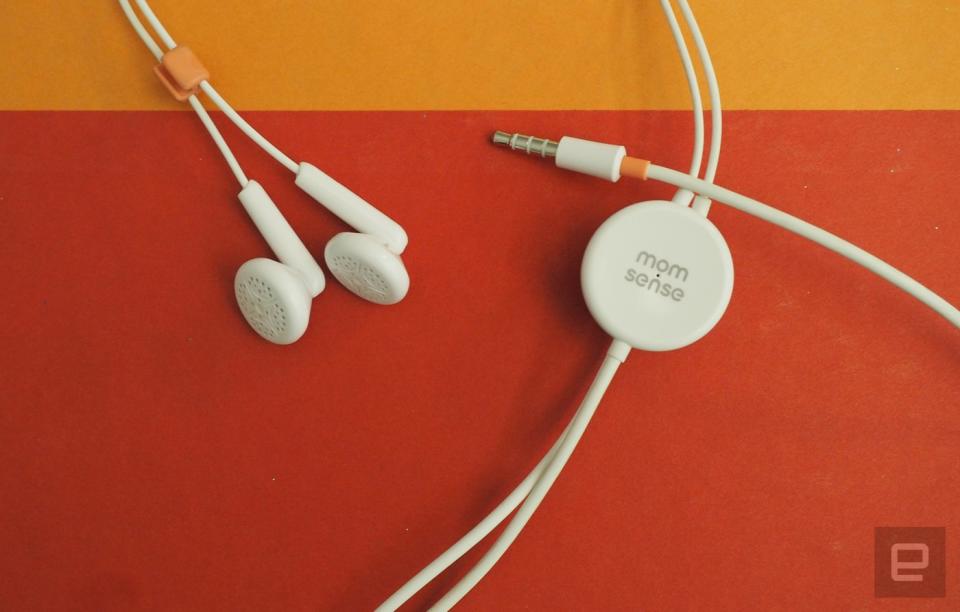Even breastfeeding is getting quantified, thanks to Momsense
We already keep track of running and sleeping, so why not mother's milk too?

The health benefits of breastfeeding are well-known, yet for various reasons, many new mothers quit after a few months. Maybe they don't have the time, they find it uncomfortable or they believe that the baby isn't getting enough milk. A new product called Momsense is taking aim at this last problem with a product and app that can keep track of how much a baby is actually drinking, hopefully putting a mom's worries at ease.
We live in an age of smart baby cribs, scales and onesies, so it seems only natural that something like breastfeeding would be next. Newborns can nurse eight to 12 times per day, meaning there's a lot of data for moms to keep track of. So why not delegate it to an app? And rather than ask moms to guess how much the baby drank (which is what traditional pen-and-paper methods demand), Momsense's small sensor handles that task.
Momsense attaches to the baby, not the mom: It's a small circle that the mother places under the child's ear, along their jawline. The device functions similar to a stethoscope, listening to the sound of the baby's swallows to determine how much the baby is drinking. It's also smart enough to tell the difference between a real swallow and random gurgles or half gulps. Mom can also listen in, thanks to the attached headphones, so she's not ceding all responsibility to the app: She can still take action if something's wrong, or she may just feel reassured having all of that sensory data available.

I don't have children, so the sounds in the demo I checked out were a little too visceral for me, but I can see how they might benefit a new mom. By making breastfeeding more immersive, the Momsense monitor might help mothers bond with their offspring even more.
What lifts Momsense beyond an ordinary stethoscope is the app that keeps track of all of this data being generated. Unlike most health-tracking apps, Momsense isn't built around a particular goal. Even though it keeps track of feeding time and quantity, it doesn't say "your baby needs this much milk" or "your baby should feed for this long." Every baby is different, and adding any kind of metric puts unnecessary pressure on the mother.

To that point, the app doesn't present its data like a fitness app would. Fitness apps tend to focus on bar or line graphs a lot, which let a person easily compare progress over a given period of time. Momsense eschews comparisons by displaying each day as a circle with each feeding as a small bubble that sort of orbits around it like a moon around a planet. The larger the bubble, the more milk consumed during each feeding, and you can click on it to see more details like time spent and a breakdown by individual breast.
The Momsense connects to phones via a traditional headphone jack (sorry, iPhone 7 users), so it's easy enough to get started and never have to worry about the signal dropping out. When a mom starts a session, the app displays a weird design of interlocking circles that pulses in time with the baby's swallows. The design feels reminiscent of mammary glands and I personally found it a bit unsettling, but mothers using it will probably be more focused on their babies anyway.

Right now the app can only handle one baby at a time, so mothers taking care of multiple children will have to rely on work-arounds like using alternate mobile devices for different babies or reserving their left or right breast for a particular child. Regardless of how many children they have, they'll only need one Momsense, which can work with any Android or iOS device. Momsense is available at the company's website for $89 or via stores like Target, Babies "R" Us and Bed, Bath and Beyond, which happen to have baby registries -- great for expectant mothers who'd like to give this quantified-parenting thing a try.






